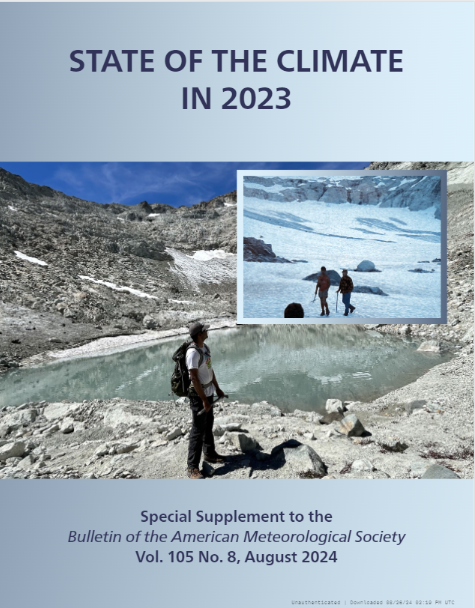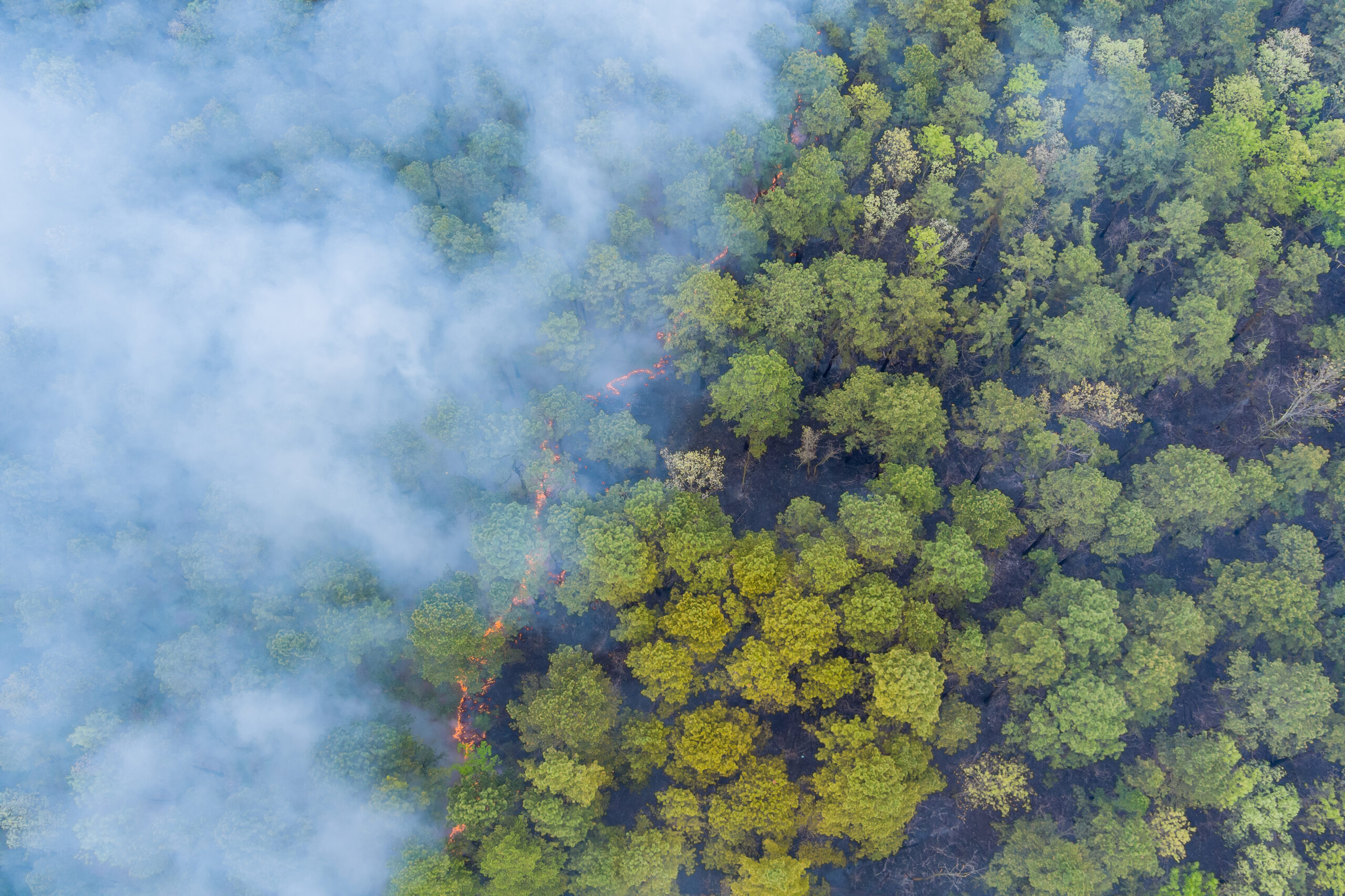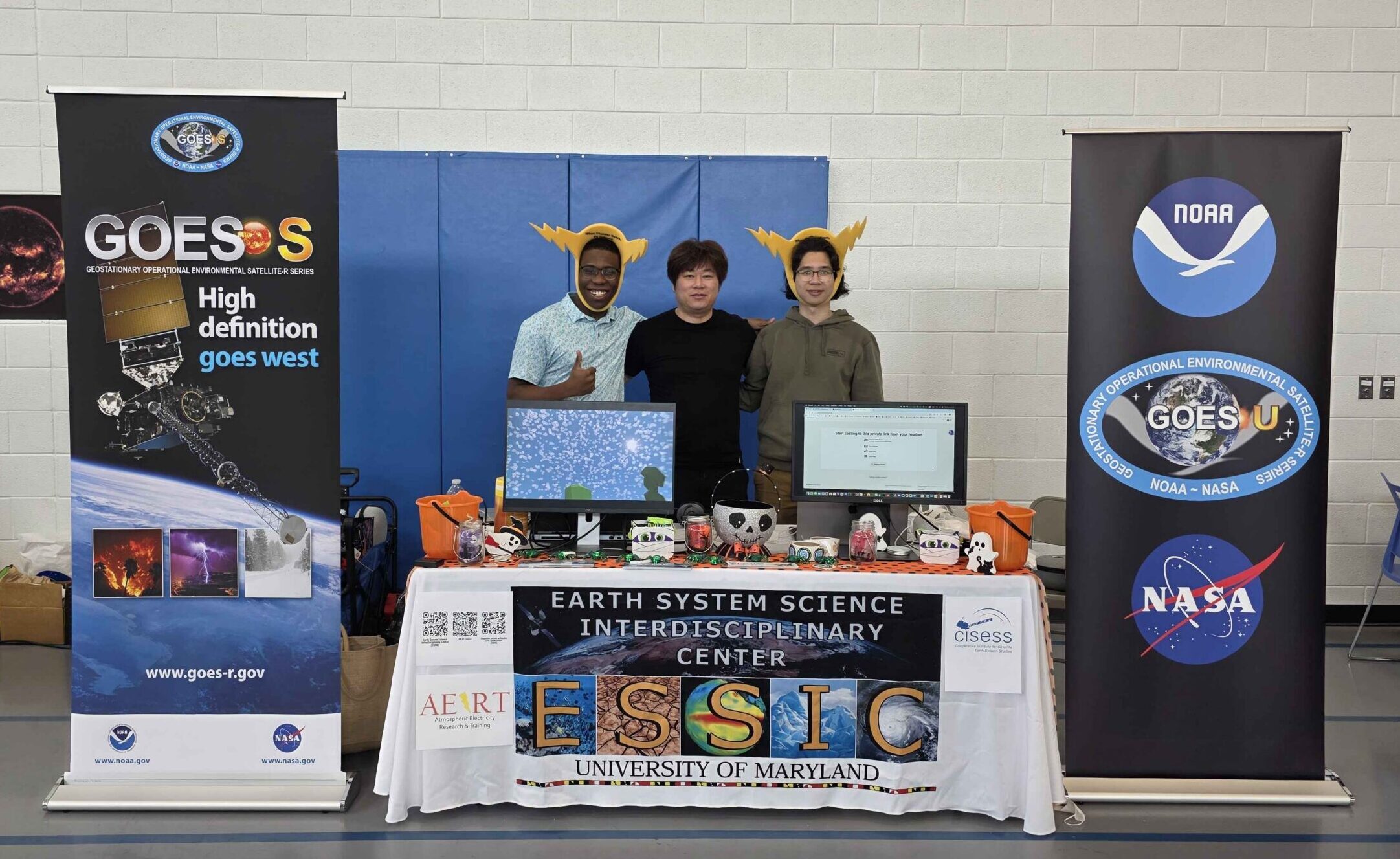
This week, the American Meteorological Society (AMS) released its annual State of the Climate report in 2023. Compiled by NOAA’s National Centers for Environmental Information, State of the Climate in 2023 is based on contributions from scientists from around the world. It provides a detailed update on global climate indicators, notable weather events, and other data collected by environmental monitoring stations and instruments located on land, water, ice, and in space. Many ESSIC/CISESS scientists are cited in the report, particularly in the “Global Climate”, “Global Oceans”, and “The Arctic” chapters.
Globally, 2023 was the warmest year since records began in the mid-1800s to mid-1900s, according to all seven global temperature datasets. Earth’s major greenhouse gases – carbon dioxide, methane, and nitrous oxide – all increased to record-high atmospheric concentrations. These trends can be seen across all climate indicators.
Chapter 2, “Global Climate”, gives a broad overview of 2023’s La Niña and El Niño conditions as well as the worldwide impacts of temperature anomalies on climate variables. Robert Adler, Guojun Gu, Xi Shao, and Jeannette Wild contributed to this chapter. Adler and Gu contributed to the subsection on Precipitation, Shao contributed to the subsection on Total Column Water Vapor, and Wild contributed to the subsection on the Stratospheric Ozone.
Chapter 3, “Global Oceans”, shifts focus to how El Niño and record marine heatwaves affect sea temperature, rise, and quality. Alexey Mishonov and Annika Jersild contributed to the “Global Oceans” chapter, with Mishonov contributing to the subsection on Ocean Heat Content and Jersild contributing to the Global Ocean Carbon Cycle subsection. Adler and Gu’s Global Precipitation Climatology Project (GPCP) version 2.3 products were also used in the Global ocean heat, freshwater, and momentum fluxes subsection of “Global Oceans”.
Chapter 5, “The Arctic”, discusses how 2023 arctic observations provide clear evidence of rapid climate change, shaped by past and ongoing human activities that release greenhouse gases into the atmosphere. Sinead Farrell and Alek Petty contributed to the subsections on Sea Ice.
To access the State of the Climate in 2023, click here.





